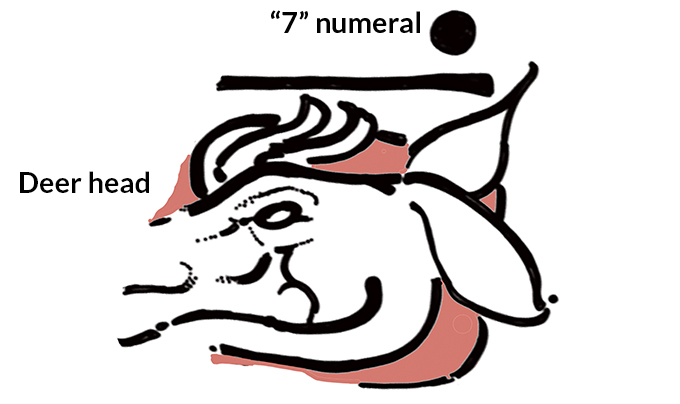Buried within the Las Pinturas pyramid in San Bartolo, Guatemala, thousands of painted plaster mural fragments offer a window into ancient Maya civilization. Two of those fragments form the earliest known record of a Maya calendar, created between 300 and 200 B.C.
The fragments depict the date of “7 Deer” from the 260-day sacred calendar common across ancient Mesoamerica and still used today by indigenous communities in Guatemala and southern Mexico, archaeologist David Stuart and colleagues report April 13 in Science Advances. The calendar system’s longevity attests to the persistence of Maya intellectual culture, says Stuart, of the University of Texas at Austin.
From 400 B.C. to 100 A.D., Mayas razed and rebuilt the pyramid seven times, creating a series of discrete time capsules stacked on top of each other, says study coauthor Heather Hurst, project director of the San Bartolo-Xultun Regional Archaeological Project. By radiocarbon dating both the material in the layer where the calendar fragments were found and the material used to bury that layer, researchers determined a narrow time window in which the 7 Deer day record would have been produced.
 In a calendar once common across Mesoamerica, 13 numbers and 20 signs are mixed and matched to represent 260 specific dates such as “7 Deer” (illustrated). The numbers 13 and 20 are sacred in the region, and the 260 days may reflect the length of human gestation.David StuartIn a calendar once common across Mesoamerica, 13 numbers and 20 signs are mixed and matched to represent 260 specific dates such as “7 Deer” (illustrated). The numbers 13 and 20 are sacred in the region, and the 260 days may reflect the length of human gestation.David Stuart
In a calendar once common across Mesoamerica, 13 numbers and 20 signs are mixed and matched to represent 260 specific dates such as “7 Deer” (illustrated). The numbers 13 and 20 are sacred in the region, and the 260 days may reflect the length of human gestation.David StuartIn a calendar once common across Mesoamerica, 13 numbers and 20 signs are mixed and matched to represent 260 specific dates such as “7 Deer” (illustrated). The numbers 13 and 20 are sacred in the region, and the 260 days may reflect the length of human gestation.David Stuart
After two decades of excavation, the site continues to be an important source of ancient Maya artifacts. The earliest known Maya writing, also dated to between 300 and 200 B.C., was found in the same time capsule as the 7 Deer day record (SN: 1/17/06).
The 260-day calendar system “survived not only close to 1,800 years in the Maya world before the Spanish showed up, but it persisted even more recently, since conquests . . . in some of the most oppressed areas,” Stuart says. “I find that an incredible thing.”
In fact, the intricacy of the depiction suggests that the calendar system had already existed for centuries by the time it was drawn, says Stephen Houston, an archaeologist at Brown University in Providence, R.I., who was not involved in the study. The characters are “very well practiced. This isn’t a stumbling baby step.”
Ten other fragments described in the study feature different styles of handwriting that indicate multiple scribes worked on the murals. This suggests that the Maya literary tradition was already robust by this time, Houston says. “There’s a density of knowledge here.”

Sign Up For the Latest from Science News
Headlines and summaries of the latest Science News articles, delivered to your inbox
Client key* E-mail Address* Go
Thank you for signing up!
There was a problem signing you up.

